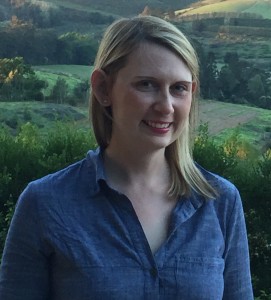Data for Decision Making Series: The Importance of CHW Data Collection with Diana Frymus

We are joining mPowering Frontline Health Workers in a series of interviews, to hear from the experts why data on community health workers is so critical, and what needs to be done.
This week, we spoke with Diana Frymus, Health Systems Strengthening Advisor in the Office of HIV/AIDS at USAID in Washington, DC. She focuses on strengthening health systems to achieve HIV goals and sustain national HIV programs. Her focal areas of emphasis are on human resources for health, including CHWs, and quality improvement. She is the USAID co-chair of the PEPFAR HRH Technical Working Group and the Health Systems Global Technical Working Group on Supporting and Strengthening the Role of Community Health Workers in Health System Development.
What are the most pressing challenges in the development of scale-up of CHW programs today?
The top three pressing challenges in the scale-up of community health worker (CHW) programs are 1) data availability 2) alignment and integration of CHW programs with national health systems and 3) harmonizing partner support for CHW cadres. Addressing these challenges would strengthen accountability of CHWs and lead to greater effectiveness and sustainability of CHWs as a cadre of the workforce. These were key issues that were put forward by the Global Health Workforce Alliance (GHWA), USAID, Norad and the Frontline Health Worker Coalition at the 3rd Global Human Resources for Health (HRH) Forum in 2013 in Recife, Brazil. The resulting CHW Partner Commitment reflects awareness of these challenges and agreement on the need to address them. This work has been widely disseminated, but the extent of its use at the country level and adhered to these principles are unclear. To investigate this further, the USAID ASSIST project is currently working to conduct country case studies to inform further implementation of the CHW Partner Commitment.
Why is data on frontline health workers, particularly CHWs, important?
Globally, the the limited availability of robust and routine health workforce data remains a challenge for effective human resources management and for answering key policy and management questions affecting health service delivery. These include addressing the development and deployment of health workers to where they are needed most. The constraints of not having robust and up-to-date HRH data have been further demonstrated in countries that have been fighting Ebola this year. HRH data availability has been a key area of focus in the recent global consultation on health workforce that has been coordinated by GHWA and supported by USAID and the World Bank, and will be used to inform the development of the WHO-mandated Global Strategy for Health Workforce 2030. It’s clear that HRH data availability will be a key element of advancing HRH in the post-2015 agenda. As an increasingly recognized key cadre of the broader health workforce, it is integral that data on CHWs be included into these broader efforts.
In your opinion, what type are the largest gaps in data on frontline health workers, particularly CHWs, right now?
At the moment, HRH data can be pieced together across a variety of sources at both the global and country level. These include various CHW data collection efforts that have been created in recent years, aligned with the increased focus on CHWs. Yet, as identified through the recent global consultation process on health workforce, the use and comparability of this data is due to the diversity of definitions used and lack of standards across HRH measurement tools. There has been an effort to align national human resource information systems (HRIS) with a minimum data set that would help address some of the alignment and interoperability issues. Building in-country HRIS and the capacity to utilize them is critical for ownership and sustainability. USAID has made robust investments in the development of iHRIS, which is an open-source HRIS currently being utilized in 19 countries. But there is still much work to do! For example, at the moment, CHWs are not always captured as part of national HRIS systems. To further guide their integration within health systems and broader health workforces, there needs to be further attention to ensuring that they are captured in these systems.
In what ways is your organization using innovative solutions to collect data on frontline health workers?
As an implementing agency of PEPFAR, USAID has been a key supporter of PEPFAR efforts to strengthen the health workforce needed for the delivery of sustained HIV and AIDS services. In PEPFAR 3.0, we have placed a greater focus on the use of data to achieve epidemic control, and we are working to better capture and utilize health workforce data and measure the impact of HRH-focused activities. The new PEPFAR HRH Strategy announced by Secretary Kerry on World AIDS Day in 2014 reflects this shift. Community health workers have played an essential role in HIV prevention, care and treatment by improving linkages between those that need care and those that can provide it, and supporting retention and self-management for improved clinical outcomes. Recognizing the important role of CHWs for HIV/AIDS, many community-based cadres were developed in the emergency phase of PEPFAR to fill specific needs for the HIV response. Now we are strengthening the sustainability of these cadres and supporting their integration into national health systems – an example of alignment with the principles of the CHW Partner Commitment!
How can we begin to close data gaps?
There needs to be increased emphasis on coordination and collaboration regarding data collection efforts and data sharing. USAID, along with the World Bank and WHO, will be hosting the Measurement and Accountability for Results in Health (MA4Health) Summit in Washington, DC in June. The Summit will bring together decision makers, thought leaders, and implementers to advance a common agenda for post-2015 health measurement. Since health workforce data will be one of the technical areas covered, this summit will be a key opportunity for further discussion on incorporating CHWs into broader health workforce data efforts moving forward.
